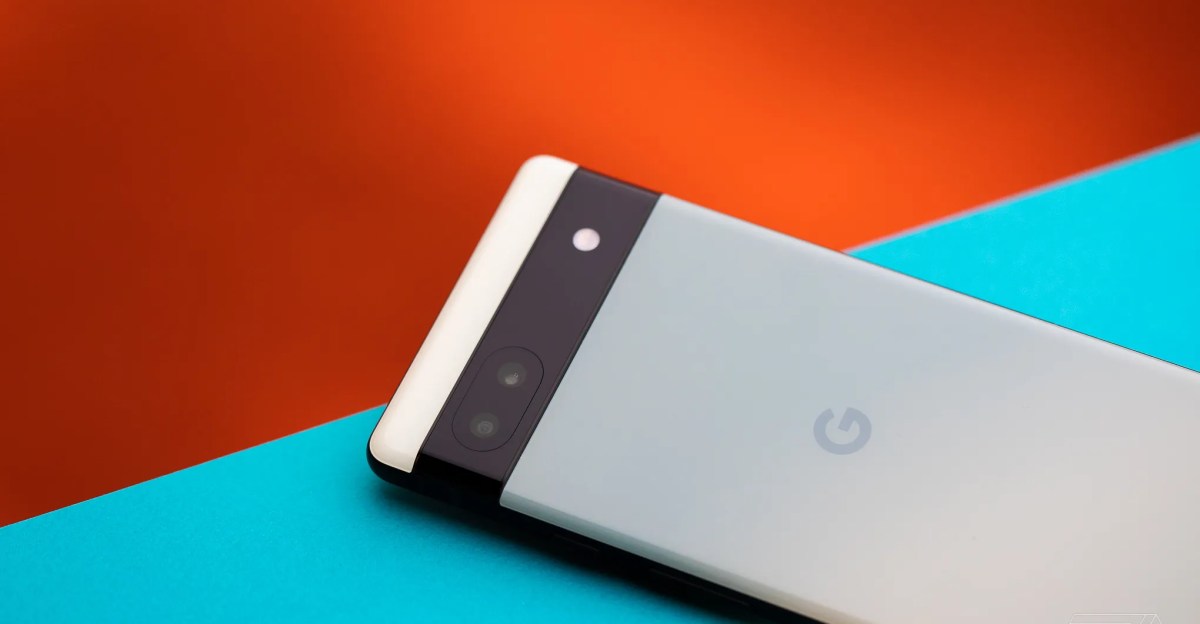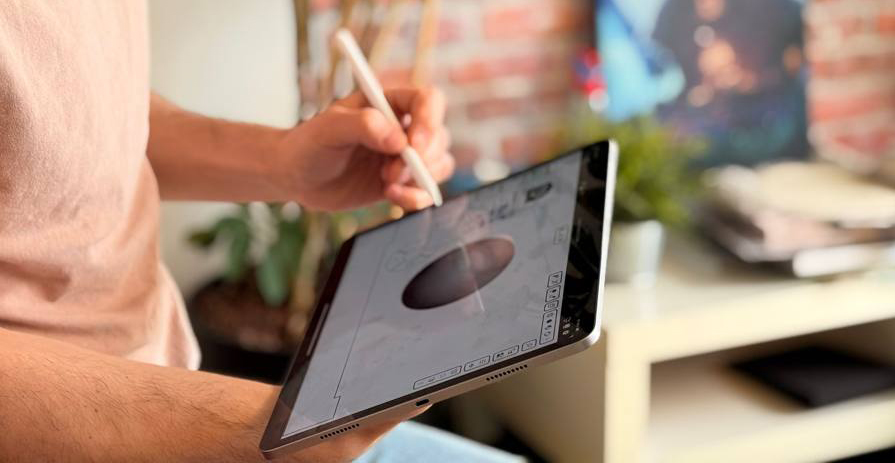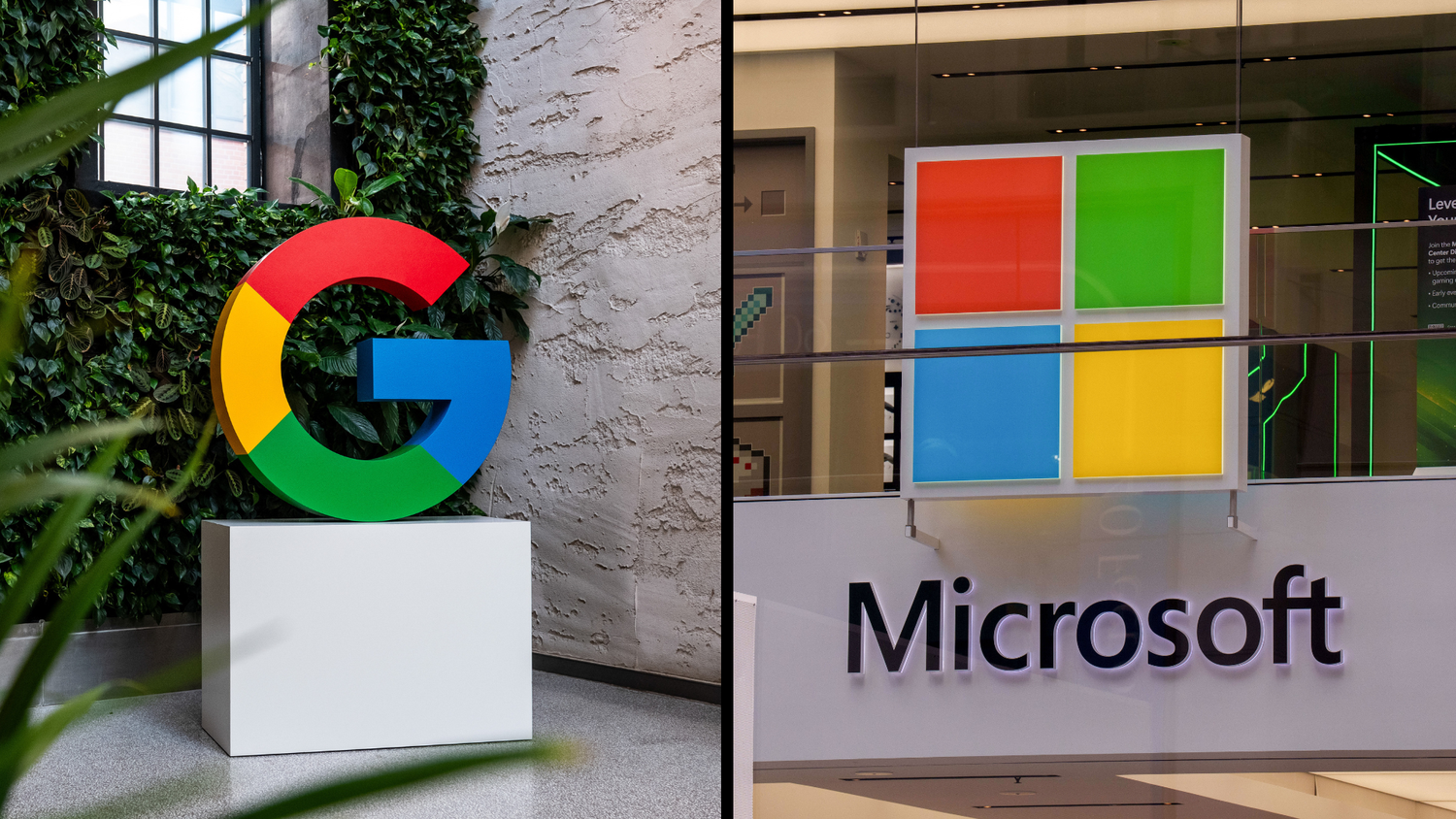- Quick takes: Chikungunya in Cuba, rapid filovirus test, World Hepatitis Day CIDRAP
- World Health Organization raises concern about spread of mosquito-borne Chikungunya virus Reuters
- France Joins With Italy, Brazil, India, Kenya And More, Face Massive Rise In Chikungunya Outbreaks: Travel Advisory for Europe, Africa, and Asia, What You Need To Know Travel And Tour World
- Preventive steps stressed to avert chikungunya outbreak The News International
- Is It Just A Fever? Recognising The Warning Signs Of Chikungunya This Monsoon News18
Blog
-

Quick takes: Chikungunya in Cuba, rapid filovirus test, World Hepatitis Day – CIDRAP
-

Pete Davison shares anecdote from the sets of The Home: ‘Won’t be my eye’
Pete Davidson is opening up about one of his filming experiences during the shooting of his upcoming movie.
The former SNL comedian, who appeared during a Tuesday episode of The Tonight Show Starring Jimmy Fallon, shared an interesting anecdote from the sets of The Home.
“Obviously, I read the script and was just like, ‘That won’t be my eye. This is the movies. It’ll be a CGI eye,’ ” Davidson recalled, adding, “You can bring people back from the dead and put them in a movie. That’s not my eye.”

“I’m like, ‘What’s going on?’ And my buddy James [DeMonaco], who directed it, he’s like, ‘Yeah, well. They’re here for your eye.’ And I was like, ‘What do you mean?’ He goes, ‘Well, you know, today’s that scene.’ I go, ‘I know, but what do you mean?’ He’s like, ‘Well, it’s going to be your eye.’ He goes, ‘You have very recognizable eyes.’ I go, ‘What the hell are you talking about? No I don’t. My eyes are normal, sir.’ “
“They open my eye or whatever, and it’s all… It’s all jacked up. And there’s these three doctors on the side, and then this actor was messing up his lines. And I was like, ‘Come on, dude,’ ” he said.
This comes as Pete Davidson has revealed that he is expecting his first child with girlfriend Elsie Hewitt.
Continue Reading
-

Visual and refractive outcomes after implantation of an isofocal optic
Introduction
A recent systematic review and meta-analysis considering 28 randomised controlled trials from the past 5 years comprising 2465 patients analysed the efficacy and safety of various presbyopia-correcting intraocular lenses (IOLs), including standard monofocal, bifocal, trifocal, extended depth-of-focus (EDOF) and enhanced monofocal IOLs after cataract surgery.1 This study found that both trifocal and EDOF IOLs showed better uncorrected intermediate visual acuity (UIVA) than monofocal IOLs. They concluded that EDOF and enhanced monofocal IOLs have improved visual quality at intermediate distances and are a good choice if there are more activities in daily life at intermediate distances. The report published by the American Academy of Ophthalmology indicates that most multifocal and EDOF IOLs that were compared with a control monofocal IOL showed that patient-reported spectacle independence was superior to the monofocal IOL.2
Different EDOF IOLs have recently appeared on the market aiming to improve visual acuity at intermediate distances compared to monofocal IOLs. Several reviews and meta-analyses have been published showing their outcomes in comparison to trifocal models.3,4 The Isopure 1.2.3. IOL (Beaver-Visitec International, Inc. [BVI], Waltham, USA) is an aspherical lens with an optical design based on an isofocal concept5 aiming to give patients good distance visual acuity with improved UIVA whilst inducing minimal photic phenomena. Different in vitro studies6–10 have analysed this IOL and using an adaptive optics simulator it has been found that the Isopure IOL shows a good balance between depth-of-focus and visual acuity at distance.8 Different clinical studies have analysed this lens11–22 and two studies with the largest sample of patients supported the optical bench assessments showing excellent distance-corrected visual acuity for far vision with improved unaided intermediate vision performance.13,16 A new Isopure IOL model, named Isopure Serenity, has been launched on the market. This model is optically identical to the Isopure 1.2.3. IOL but with a different haptics platform. The Isopure Serenity shows a POD double C-loop posterior angulated haptic platform, which differs from the MICRO closed loop quadripode posterior angulated haptic of the Isopure 1.2.3 model. To our knowledge, there are no published studies reporting the clinical outcomes achieved either with this new IOL or with Japanese eyes. Therefore, the aim of the current study is to assess the visual and refractive outcomes in Japanese patients diagnosed with cataracts implanted with the Isopure Serenity IOL.
Methods
Study Design and Patients
In this clinical study, we prospectively examined 38 eyes from 19 patients at the Nihonbashi Cataract Clinic (Tokyo, Japan) between June 2024 and February 2025. The study was carried out in accordance with the tenets of the Declaration of Helsinki and was approved by the Nihonbashi Cataract Clinic Review Board. The inclusion criteria were cataracts, male or female adults aged 45 years or older on the day of treatment who were implanted with the Isopure Serenity IOL, maximum time between first and second eye treatment of 30 days, capacity to understand and sign the informed consent form and privacy authorisation and willing and able to conform to the study requirements. The exclusion criteria included age of patient <45 years at the day of surgery, time between first and second eye treatment >30 days, patients who underwent previous intraocular or corneal surgery other than IOL implantation, patients showing glaucoma, patients with diagnosed degenerative visual disorders (eg AMD), patients in whom surgical complications occurred (eg posterior capsule rupture) and patients in whom in-the-bag implantation was not possible.
Intraocular Lens
All eyes were implanted with the posterior chamber premium hydrophobic Isopure Serenity IOL (non-toric or toric model). This IOL is made of GFY hydrophobic acrylic material (refractive index = 1.53 and Abbe number = 42) with blue light and UV filter. The aspheric refractive optic design, based on an isofocal refractive concept, displays polynomial surface design parameters to extend the depth-of-focus compared to monofocal IOLs. The IOL shows the posterior angulated POD double C-loop haptic platform with RidgeTech. The optical zone of the lens is of 6.00 mm and the overall diameter is 11.4 mm. The spherical power ranges from +10.00D to +30.00D (in 0.50D steps) and from +31.00D to +35.00D (in 1.00D steps), and the cylindrical power at the IOL plane is of 1.00, 1.50, 2.25, 3.00, 3.75, 4.50, 5.25, and 6.00D.
Surgical Procedure and IOL Power Calculation
In this prospective study, the surgical procedure considered a phacoemulsification technique by means of the Centurion Phacoemulsification device (Alcon Labs, Fort Worth, TX, USA) through a 2.2 mm clear corneal incision with topical anaesthesia by an experienced surgeon (TA) using Phaco Prechop technique23 following the standard procedure previously published.24–26 In the case of toric lenses, the toric axis was marked by the Akahoshi Intra-operative Axis Marker with CCC Guide (ASICO AE-2933). IOL power was calculated using the Barrett Universal II formula and the target refraction was emmetropia in all eyes. The IOLMaster 700 swept-source OCT device (Carl Zeiss Meditec AG, Germany) was used to perform the optical biometry obtaining K1, K2, axis K1, axis K2, axial length, anterior chamber depth, lens thickness and white-to-white distance.
Visual and Refractive Measurements
At 3 months post-surgery the following visual metrics were recorded for distance, using the Sloan ETDRS tests (Precision Vision, Woodstock, IL, USA) on a LogMAR scale: monocular uncorrected distance visual acuity (UDVA) and corrected distance visual acuity (CDVA); for intermediate (at 80 and 66 cm): UIVA and distance-corrected intermediate visual acuity (DCIVA); and for near (at 40 cm): uncorrected near visual acuity (UNVA) and distance-corrected near visual acuity (DCNVA). Visual acuity at difference vergences was obtained by means of the photopic binocular best-corrected distance defocus testing for spherical additions ranging from –4.00D to +1.00D in 0.5D steps. Refraction (sphere, cylinder and axis) was recorded and the spherical equivalent (SE) was calculated. In addition, the vector analysis for outcome reports was conducted using the double-angle plot tool27 considering the preoperative corneal astigmatism obtained from the IOLMaster 700 optical biometer and the refraction obtained at the last postoperative visit. Any adverse event or complication during surgery and follow-up were also recorded.
Statistical Analysis
For visual acuities and refraction parameters, the mean, standard deviation (SD), minimum and maximum values were calculated using the Excel software (2019, version 16.43, Microsoft Corporation, Redmond, WA, USA). Standard graphs for reporting refractive and visual acuity outcomes for IOL-based refractive surgery were plotted.28
Results
Thirty-eight eyes of 19 patients implanted with the Isopure Serenity IOL were recruited in this study. Fourteen patients were female (73.68%). Patients’ demographics and preoperative characteristics are shown in Table 1. The mean patient’s age was 69.16 ± 10.28 years (ranging from 47 to 88 years). Neither surgical complications nor adverse events related to the IOL were reported in our sample during the study.
Table 1 Demographic Characteristics of Participants Shown as Means, Standard Deviations (SD) and Ranges
In order to report the refractive and clinical outcomes of this sample, we have constructed the standard graphs for IOL-based surgery. Specifically, for accuracy, Figure 1 was created showing the distribution of SE (Figure 1A) and refractive cylinder (Figure 1B) after the surgery. Note that the highest percentage of eyes, 65.79%, was for the range between ±0.13D followed by 18.42% for the +0.14 to +0.50D range. About 100% of the eyes were within ±1.00D and 89.47% of the eyes within ±0.50D. At 3 months, the mean SE and refractive cylinder were 0.12 ± 0.35D (ranging from 1.00 to –0.75D) and –0.11 ± 0.33D (ranging from 0.00 to –1.50D), respectively. For the vector analysis assessment, Figure 2 was plotted, showing the preoperative corneal astigmatism before the surgery (Figure 2A) and the postoperative refractive astigmatism at 3 months post-IOL implantation (Figure 2B). We may observe that the mean absolute of the corneal astigmatism before surgery was 0.58 ± 0.36D and that of the refractive astigmatism was 0.11 ± 0.33D after the intervention, showing its reduction.

Figure 1 Distribution of postoperative spherical equivalent refraction (A) and refractive cylinder (B) at three months post-Isopure Serenity intraocular lens implantation.

Figure 2 Double-angle plots for preoperative corneal astigmatism (A) and postoperative refractive astigmatism (B) at three months post-Isopure Serenity intraocular lens implantation. Centroids, mean absolute values with standard deviations, 95% confidence ellipse of the centroid and 95% confidence ellipse of the dataset are also shown.
For visual acuity outcomes, Figure 3 was plotted. This figure shows the cumulative proportion of eyes at 3 months post-surgery with a given UDVA and CDVA (Figure 3A), UIVA and DCIVA (Figure 3B) and UNVA and DCNVA (Figure 3C) values. At the last follow-up visit (3 months), 34 (89.47%) and 37 eyes (97.37%) had 20/20 or better UDVA and CDVA, respectively, with 36 (94.74%) and 37 eyes (97.37%) achieving 20/25 or better UDVA and CDVA, respectively (see Figure 3A). Specifically, the mean values for UDVA and CDVA were –0.05 ± 0.08 and –0.08 ± 0.05 logMAR, respectively. Table 2 shows the mean values for all the visual acuity measurements. For intermediate visual acuity (see Figure 3B), 22 (57.89%) and 16 eyes (42.11%) achieving 20/32 or better DCIVA at 80 and 66 cm, respectively, with 31 (81.58%) and 23 eyes (60.53%) achieving 20/40 or better DCIVA at 80 and 66 cm, respectively. The mean values for DCIVA were 0.23 ± 0.13 and 0.28 ± 0.13 logMAR at 80 cm and at 66 cm, respectively (Table 2). At near vision (see Figure 3C), 10 (26.32%) and 10 eyes (26.32%) had 20/32 or better UNVA and DCNVA, respectively, with 23 (60.53%) and 21 eyes (55.26%) achieving 20/40 or better UNVA and DCNVA, respectively. The mean DCNVA (40 cm) was 0.35 ± 0.14 logMAR (Table 2). In addition, in order to evaluate the change in visual acuity at different vergences (defocus values), Figure 4 was created. This figure shows the postoperative photopic binocular through-focus, best-corrected visual acuity from 1.0D to –4.0D at 3 months post-surgery. As expected, the best visual acuity is obtained at distance focus (0D of vergence) with a reduction in its value with increased lens power. Values of about 0.20 logMAR showed a depth-of-focus of about 1.75D.

Table 2 Monocular Visual Acuity Outcomes (logMAR) for Eyes Implanted with the Isopure Serenity Toric Intraocular Lens (IOL) Shown as Means, Standard Deviations (SD) and Ranges at 3 Months of Follow-Up

Figure 3 Cumulative proportion of eyes at three months post-Isopure Serenity intraocular lens implantation with a given postoperative uncorrected distance visual acuity (UDVA) and corrected distance visual acuity (CDVA) (A), uncorrected intermediate visual acuity (UIVA) and distance-corrected intermediate visual acuity (DCIVA) at 80 and 66 cm (B), and uncorrected near visual acuity (UNVA) and distance-corrected visual acuity (DCNVA) at 40 cm (C).

Figure 4 Mean photopic binocular logMAR visual acuity with best correction for distance as a function of the chart vergence from 1.0 D to −4.0 D at three months post-Isopure Serenity intraocular lens (IOL) implantation. Error bars represent standard deviation. The right y-axis shows Snellen feet acuity.
Discussion
New EDOF IOLs are increasingly being used by cataract and refractive surgeons. This type of IOL aims to provide a continuous range of vision offering good visual acuity at far and intermediate distances. As we have indicated, the Isopure 1.2.3. IOL has been widely studied in different clinical reports11–22 showing good outcomes in terms of accuracy and visual acuity. The current study constitutes the first report on clinical outcomes with a new model, the Isopure Serenity IOL. The objective is to assess the refractive and visual performance of this lens in Japanese eyes and to compare it with previously published literature with the Isopure 1.2.3. IOL, specifically with two multicentre studies with the largest sample of patients of this IOL model: 183 eyes of 109 patients at 4 months carried out in Spain13 and 130 eyes of 65 patients at 4–6 months carried out in the Philippines, the Czech Republic and Spain.16
Analysing the refractive outcomes of the Isopure Serenity IOL obtained in the current study, 100% of the eyes were within ±1.00D and 89.47% of the eyes within ±0.50D (see Figure 1). The mean SE and refractive cylinder were 0.12 ± 0.35D and –0.11 ± 0.33D, respectively. These results are in agreement with those found by previous literature with the Isopure 1.2.3. IOL for Bernabeu-Arias et al13 with 95.7% of eyes within ±1.00D and 73.2% of eyes within ±0.50D and a mean postoperative SE of –0.12 ± 0.42D and a refractive cylinder of –0.46 ± 0.43D, and Ang et al16 with 99.23% of eyes within ±1.00D and 84.62% of eyes ±0.50D and a mean SE of −0.06 ± 0.36D and a refractive cylinder of −0.47 ± 0.37D. Then, we can consider both IOL models to be similar in terms of refractive accuracy. It should be considered that our cohort also includes Isopure Serenity toric IOLs. The Isopure Serenity shows a POD double C-loop posterior angulated haptic platform, which is the main difference with the Isopure 1.2.3. IOL model. This platform has been evaluated as showing excellent stability. This correlates with our good refractive outcomes in terms of spherical equivalent and astigmatism (see Figures 1 and 2). For example, a laboratory study assessing its mechanical stability using digital image correlation reported an axial displacement and tilt of 0.09 ± 0.06 mm and 0.76 ± 0.50 degrees against 0.09 mm and 1.74 degrees for a compression diameter of 9.50 mm.29 Similar results were obtained for the other compression diameters. The results obtained are also comparable to in silico values (0.09 ± 0.06 mm versus 0.03 mm for a diameter of 9.50 mm), providing adequate mechanical stability for all the compression diameter range tested (11.00 to 9.50 mm).30
Now focusing on visual acuity, we also found good outcomes (see Figure 3), with 89.47% and 97.37% of eyes having monocular UDVA and CDVA ≥20/20, respectively. Bernabeu-Arias et al13 found percentages of 50.82% and 76.57%, respectively, and Ang et al16 found values of 56.2% and 84.6%, respectively. The mean values in our cohort for UDVA and CDVA were –0.05 ± 0.08 and –0.08 ± 0.05 logMAR, respectively, and for Bernabeu-Arias et al13 0.06 ± 0.12 and 0.01 ± 0.06 logMAR, respectively, and for Ang et al16 0.06 ± 0.11 and –0.01 ± 0.08 logMAR, respectively. In general, our values were slightly better to those reported in both previously published cohorts. The outcomes for intermediate vision showed 57.89% and 42.11% of eyes achieving ≥20/32 DCIVA at 80 and 66 cm, respectively, with 81.58% and 60.53% of eyes achieving ≥20/40 DCIVA at 80 and 66 cm, respectively. The cumulative outcomes for monocular conditions in the Bernabeu-Arias et al13 study were 76.58% and 51.27% of eyes achieving ≥20/32 DCIVA at 80 and 66 cm, respectively, and in the Ang et al16 94.6% and 71.5% of eyes achieving ≥20/32 DCIVA at 80 and 66 cm, respectively. In this case, the cumulative values in our cohort were lower than these two studies. Note that possible differences in the measurement method, pupil size of the patients or the specific-population ocular characteristics of the population may play a role in these differences. The mean values for DCIVA were 0.23 ± 0.13 and 0.28 ± 0.13 logMAR at 80 cm and at 66 cm, respectively. These values for the Ang et al16 study were better compared to ours, being 0.15 ± 0.11 and 0.19 ± 0.12 logMAR, respectively. In contrast, at near vision, 60.53% and 55.26% of eyes achieved a value ≥20/40 of UNVA and DCNVA, respectively, but with lower values in the Bernabeu-Arias et al13 study: 33.88% and 21.52% of UNVA and DCNVA, respectively, and similar to that found in the Ang et al16 study: 58.5% for DCNVA.
To ascertain how visual acuity changes with vergence (distance), Figure 4 shows the defocus curve under binocular conditions. This figure correlates with classical figures of defocus curve in this type of IOL showing a peak of best visual acuity located at 0D of defocus (far vision) and a smooth transition reduction with increasing negative lens power (closer distance to the eye). The good outcome is expected due to this lens maintaining good visual acuity at distance (>20/20 at 0D) while improving intermediate visual acuity (ranging from 20/32 to 20/20 between −1D and −2D vergence). Considering a 0.2 logMAR threshold, this lens offers a depth-of-focus of about 1.75D. Bernabeu-Arias et al13 and Ang et al16 also measured the binocular defocus curve showing both a peak at 0D with reduced values with closer distances. Bernabeu-Arias et al13 consider the depth-of-focus in their cohort to be about 1.50D, and Ang et al16 about 1.75D. The value obtained in our cohort is in agreement with these two studies. This amount of depth-of-focus provides our patients with good visual acuity at intermediate distances being useful for some daily life activities.
We want to indicate that our study has several limitations. The first is that we have included only one group, as this is a non-comparative design, and, therefore, the comparison was made with published literature by other authors. Our follow-up was 3 months and in spite of the fact that we consider this period long enough to study the performance of the lens, a longer follow-up is always desirable to confirm the early values. The analysis of centration and tilt of the IOL should be also analysed in future studies. And finally, it is interesting to consider other analyses that include quality of vision and patient satisfaction and photic phenomena questionnaires.
Conclusion
In conclusion, the present study shows that the new isofocal Isopure Serenity IOL with double C-loop haptics results in accurate refractive outcomes with excellent visual performance for distance vision and functional intermediate vision in Japanese eyes. This new IOL model performs similarly to the Isopure 1.2.3 IOL model, being an effective option to provide our patients with functional intermediate vision.
Disclosure
The author reports no conflicts of interest in this work.
References
1. Li J, Sun B, Zhang Y, et al. Comparative efficacy and safety of all kinds of intraocular lenses in presbyopia-correcting cataract surgery: a systematic review and meta-analysis. BMC Ophthalmol. 2024;24(1):172. doi:10.1186/s12886-024-03446-1
2. Schallhorn JM, Pantanelli SM, Lin CC, et al. Multifocal and accommodating intraocular lenses for the treatment of presbyopia: a report by the American Academy of Ophthalmology. Ophthalmology. 2021;128(10):1469–1482. doi:10.1016/j.ophtha.2021.03.013
3. Karam M, Alkhowaiter N, Alkhabbaz A, et al. Extended depth of focus versus trifocal for intraocular lens implantation: an updated systematic review and meta-analysis. Am J Ophthalmol. 2023;251:52–70. doi:10.1016/j.ajo.2023.01.024
4. Tavassoli S, Ziaei H, Yadegarfar ME, et al. Trifocal versus extended depth of focus (EDOF) intraocular lenses after cataract extraction. Cochrane Database Syst Rev. 2024;7(7):CD014891. doi:10.1002/14651858.CD014891.pub2
5. Fernández Gutiérrez D, Barbero Briones S, Dorronso Díaz C, Marcos Celestino S. inventor. Refractive multifocal intraocular lens with optimised optical quality in a range of focus and method to produce it. Patent EP2941222A1. 2013.
6. Łabuz G, Son HS, Naujokaitis T, Yildirim TM, Khoramnia R, Auffarth GU. Laboratory investigation of preclinical visual-quality metrics and halo-size in enhanced monofocal intraocular lenses. Ophthalmol Ther. 2021;10(4):1093–1104. doi:10.1007/s40123-021-00411-9
7. Azor JA, Vega F, Armengol J, Millan MS. Optical assessment and expected visual quality of four extended range of vision intraocular lenses. J Refract Surg. 2022;38(11):688–697. doi:10.3928/1081597X-20220926-01
8. Lago CM, de Castro A, Benedí-García C, Aissati S, Marcos S. Evaluating the effect of ocular aberrations on the simulated performance of a new refractive IOL design using adaptive optics. Biomed Opt Express. 2022;13(12):6682–6694. doi:10.1364/BOE.473573
9. Alarcon A, Canovas C, Koopman B, Pande MV, Koch DD, Piers P. Optical bench evaluation of the effect of pupil size in new generation monofocal intraocular lenses. BMC Ophthalmol. 2023;23(1):112. doi:10.1186/s12886-023-02839-y
10. Pérez-Sanz L, Vega F, Azor-Morón JA, Cuellar F, Millán MS, Garzón N. Tolerance to residual astigmatism of an isofocal intraocular lens. Graefes Arch Clin Exp Ophthalmol. 2024;262(4):1169–1180. doi:10.1007/s00417-023-06305-9
11. Stodulka P, Slovak M. Visual performance of a polynomial extended depth of focus intraocular lens. Open J Ophthalmol. 2021;11:214–228. doi:10.4236/ojoph.2021.113017
12. Bova A, Vita S. Clinical and aberrometric evaluation of a new monofocal IOL with intermediate vision improvement. J Ophthalmol. 2022;2022:4119698. doi:10.1155/2022/4119698
13. Bernabeu-Arias G, Beckers S, Rincón-Rosales JL, Tañá-Rivero P, Bilbao-Calabuig R. Visual performance at different distances after implantation of an isofocal optic design intraocular lens. J Refract Surg. 2023;39(3):150–157. doi:10.3928/1081597X-20230124-02
14. Tomagova N, Elahi S, Vandekerckhove K. clinical outcomes of a new non-diffractive extended depth-of-focus intraocular lens targeted for mini-monovision. Clin Ophthalmol. 2023;17:981–990. doi:10.2147/OPTH.S405267
15. Lesieur G, Dupeyre P. A comparative evaluation of three extended depth of focus intraocular lenses. Eur J Ophthalmol. 2023;33(6):2106–2113. doi:10.1177/11206721231154818
16. Ang RET, Stodulka P, Poyales F. Prospective randomized single-masked study of bilateral isofocal optic-design or monofocal intraocular lenses. Clin Ophthalmol. 2023;17:2231–2242. doi:10.2147/OPTH.S425352
17. Mencucci R, Morelli A, Cennamo M, Roszkowska AM, Favuzza E. Enhanced monofocal intraocular lenses: a retrospective, comparative study between three different models. J Clin Med. 2023;12(10):3588. doi:10.3390/jcm12103588
18. Pérez-Sanz L, Charbel C, Poyales F, Garzón N. Influence of isofocal intraocular lenses on objective refraction based on autorefraction and aberrometry. Graefes Arch Clin Exp Ophthalmol. 2023;261(10):2863–2872. doi:10.1007/s00417-023-06102-4
19. Danzinger V, Schartmüller D, Schwarzenbacher L, et al. Clinical prospective intra-individual comparison after mix-and-match implantation of a monofocal EDOF and a diffractive trifocal IOL. Eye. 2024;38(2):321–327. doi:10.1038/s41433-023-02682-x
20. Danzinger V, Schartmüller D, Lisy M, et al. Fellow-eye comparison of monocular visual outcomes following monofocal extended depth-of-focus (EDOF) and Trifocal EDOF intraocular lens implantation. Am J Ophthalmol. 2024;267:76–83. doi:10.1016/j.ajo.2024.05.029
21. Fernández-Núñez S, Pérez-Sanz L, Gómez-Pedrero JA, García-Montero M, Albarrán-Diego C, Garzón N. Optical quality in vitro and in vivo of an extended depth-of-focus intraocular lens with isofocal design. Graefes Arch Clin Exp Ophthalmol. doi:10.1007/s00417-024-06590-
22. Assaf AH, Samy H, Fawky N, Kamel MA. Evaluation of visual outcomes, postoperative angle alpha, and angle kappa after implantation of isofocal intraocular lenses. Clin Ophthalmol. 2024;18:2879–2890. doi:10.2147/OPTH.S478471
23. Akahoshi T. Phaco prechop: manual nucleofracture prior to phacoemulsification. In: Elander R, editor. Operative Techniques in Cataract and Refractive Surgery. Philadelphia, PA: W.B. Saunders Company; 1998:69–91.
24. Akahoshi T. Refractive and visual outcomes using a trifocal, diffractive, hydrophobic intraocular lens in Japanese eyes. Clin Ophthalmol. 2024;18:1403–1415. doi:10.2147/OPTH.S464432
25. Akahoshi T. Hydrophobic trifocal toric intraocular lens outcomes in Japanese eyes after cataract surgery. Clin Ophthalmol. 2024;18:2021–2031. doi:10.2147/OPTH.S471846
26. Akahoshi T. Three Patient-reported outcomes questionnaires in Japanese patients undergoing cataract surgery with trifocal IOL implantation. Clin Ophthalmol. 2024;18:2521–2529. doi:10.2147/OPTH.S478292
27. Abulafia A, Koch DD, Holladay JT, Wang L, Hill W. Pursuing perfection in intraocular lens calculations: IV. Rethinking astigmatism analysis for intraocular lens-based surgery: suggested terminology, analysis, and standards for outcome reports. J Cataract Refract Surg. 2018;44(10):1169–1174. doi:10.1016/j.jcrs.2018.07.027
28. Reinstein DZ, Archer TJ, Srinivasan S, et al. Standard for reporting refractive outcomes of intraocular lens-based refractive surgery. J Refract Surg. 2017;33(4):218–222. doi:10.3928/1081597X-20170302-01
29. Cabeza-Gil I, Frechilla J, Calvo B. Evaluation of the mechanical stability of intraocular lenses using digital image correlation. Sci Rep. 2023;13(1):9437. doi:10.1038/s41598-023-36694-0
30. Remón L, Cabeza-Gil I, Calvo B, Poyales F, Garzón N. Biomechanical stability of three intraocular lenses with different haptic designs: in silico and in vivo evaluation. J Refract Surg. 2020;36(9):617–624. doi:10.3928/1081597X-20200713-02
Continue Reading
-

Yet another Pixel 6A caught fire
Another user has reported their Pixel 6A catching fire — but this time, it appears to have occurred after applying Google’s recent battery performance update that was intended to prevent overheating issues, as spotted by Android Authority. In a post on Reddit, a Pixel 6A user says they awoke to a “horrible smell and a loud noise,” which is when they discovered their device on fire while charging atop the nightstand next to them.
The Redditor says the device was plugged into a 45W charger for the Steam Deck when it caught fire, melting the phone’s screen and case. “The phone was sitting less than 40 cms away from my head on my nightstand,” u/footymanageraddict says in the post. “Sheets caught on fire. My ac (a floor unit) had damages on its surface from the fire. My throat hurt the whole day from the fumes i inhaled.”
Google didn’t immediately respond to a request for comment.
After several reports of Pixel 6A fires emerged earlier this year, Google released a mandatory software update designed to reduce battery capacity and charging performance after 400 charge cycles. Google also began offering a free battery replacement for eligible devices. This Reddit user says they applied the mandatory update, but they didn’t replace their battery because they had no walk-in replacement options available in their country and could only mail in their device.
As noted by Android Authority, the Australian Competition and Consumer Commission warned customers last week that Pixel 6A devices may have an “overheating battery could pose a risk of fire and/or burns to a user,” adding that “incidents have occurred resulting in serious burn injuries.”
Continue Reading
-

Jennifer Lopez Is Singlehandedly Trying to Revive This Throwback Shoe
It is fitting that Jennifer Lopez has a song called “Dinero,” because she’s making the most of the złoty on a shopping spree in Warsaw, Poland.
Following a concert in the Polish capital (where she expertly brushed off a wardrobe malfunction), JLo celebrated by making a purchase at the Dior store. But her tomato-red outfit belonged to another brand entirely.
SplashNews.com
Lopez was decked out in head-to-toe Valentino Garavani, her short-sleeved A-line minidress cinched at the waist with a thin red belt bearing the brand’s V logo. Her matching red purse, the V Logo Shoulder Bag, was affixed a gold crossbody chain. (The only non-Valentino branded item? Her enormous bedazzled “JLo” cup. A gal’s gotta stay hydrated!)
SplashNews.com
Continue Reading
-

Microsoft plans to bring Xbox age verification to countries outside of the UK
Microsoft is implementing an age verification system on Xbox accounts to comply with the UK’s Online Safety Act, and in a new blog post announcing the move, the company suggests it’ll come to other countries, too.
Players in the UK who indicate on their account that they’re 18 years or older will now “begin seeing notifications encouraging them to verify their age,” Microsoft says. The process is optional for now, and players will be able to enjoy playing Xbox games until “early 2026,” when verification will become mandatory to “retain full access to social features on Xbox, such as voice or text communication and game invites.” If you don’t verify, you’ll still be able to make purchases, play games and earn achievements, but social features will be limited to your friends.
Microsoft says its hopes to learn from its UK program, and “roll out age verification processes to more regions in the future.” The company cautions that the version it introduces in other regions might look different than the “proof of government-issued ID, age estimation, mobile provider check and credit card check” options it’s offering in the UK, but age verification will be the norm.
The UK’s Online Safety Act was signed in to law in 2023 to ban nonconsensual deepfake porn and create rules preventing children from being exposed to adult content. As regulators have defined ways companies can comply with the law, implementing an age verification system has become the solution most platforms that host adult content have settled on. That’s why Microsoft, Bluesky, Reddit, Discord and others have announced age-verification programs in the last few months.
The problem is, no age verification system is foolproof, and in some cases all they take is a photo to circumvent. The Verge reports you can fool Reddit’s age gate with the photo mode in Death Stranding 2: On the Beach, for example. Using a VPN has also proven to be a way to get around age verification tools. If companies take Microsoft’s approach and introduce age verification in more regions, it might get harder to avoid, but widespread adoption has privacy and security implications of its own.
Continue Reading
-

Popular 3D application Blender will get a tablet version
To that end, some features developed for the mobile version of Blender will cross-pollinate to desktop, like icon support for sidebar tabs and a helper overlay with curated shortcuts, among other things.
You can see some mockups over at the Blender blog. Development has begun in earnest on a new, separate branch for this tablet application. It will be developed first to target the iPad Pro and Apple Pencil, with other platforms and tablets to get tailored support later.
It sounds like the team already has some knowledgable designers and developers on this branch, but the blog post is also an invitation for new contributors. Specifically, it calls for “developers with extensive experience in this area” to contribute to building the application, touch events and gestures support, “File System / iCloud / AirDrop support,” and OpenSubdiv.
It sounds like things are already moving relatively quickly, as a tech demo is planned for SIGGRAPH 2025 in Vancouver next month.
Continue Reading
-

Scientists Create Prototype of Robot Designed to Cannibalize Parts of Other Robots and Build Them Into Itself
Should robots be able to cannibalize each other so they can accelerate their evolution, bringing them closer to resembling self-sufficient lifeforms capable of living independently of their human masters?
Good news if your answer to that question is “yes”: a team of researchers from Columbia University have built a robot that can seek out and merge with other robots to grow bigger, stronger, and adapt its abilities to its environment — perhaps one day enabling entire “robot ecologies” to blossom.
What their efforts have produced so far, as detailed in a new study in the journal Science, is a prototype called the “Truss Link,” a rod-shaped module that can expand, contract, crawl, and use its magnetic tips to connect with other modules. It may not look like much on its own, but it’s a versatile platform that can build complex structures that can move and interact with their environment in adaptable ways.
“True autonomy means robots must not only think for themselves but also physically sustain themselves,” lead author Philippe Martin Wyder, a researcher at Columbia Engineering and the University of Washington, said in a statement about the work. “Just as biological life absorbs and integrates resources, these robots grow, adapt, and repair using materials from their environment or from other robots.”
In a fascinating video shared by the researchers, a jumble of six, separated Truss Links teleoperated by the researchers writhe towards each other until they form one robot with two triangular halves, with one half having an extra link, or “tail.” The researchers call this process “robot metabolism,” in that it crudely mirrors how biological organisms can absorb each other, like a rough mechanical equivalent of what you might have done with that salad at lunch.
The newly formed shape then inches towards a ledge, throws itself off but leaves the tail lingering above, props up one half against a nearby object, and uses the height difference so the tail can close the shape to form a tetrahedron, demonstrating that the robots could use their environment to transform themselves from a 2D structure to a 3D one.
From there, the tetrahedron robot then absorbs another truss link to use it as a “walking stick.” Now a “ratchet tetrahedron,” the robot can move 66 percent faster than before up a ten-degree incline, the researchers said.
In a further testament to their versatility, the robots also showed that they can assist other machines upgrade themselves: in a video, a ratchet tetrahedron on a platform uses its walking stick like an appendage to yoink up another robot below it so it can complete its tetrahedron transformation. The robots also showed they can maintain themselves by discarding modules that are low on battery and replacing them with fresh ones.
Wyder’s inspiration, per an interview with Ars Technica, came from the observation that in the biological world, just 20 standard amino acids can combine into a practically limitless number of proteins. Each Truss Link module, in Wyder’s mind, serves as a single amino acid.
It’s part of his philosophy of avoiding what he sees as a common pitfall in the field of robotics, which is merely seeking to mimic biology. “In doing so, we’ve been just replicating the results of biological evolution,” he told Ars. “I say we need to replicate its methods.”
Still, the bots have their work cut out for them before they can rival the living world. That they were teleoperated by the researchers instead of operating entirely independently is one shortcoming — though in fairness to the team that built them, life had billions of years to let random processes play out before forming the first multicellular organisms.
Computer simulations conducted by the researchers suggest the robots could spontaneously produce most of the tested shapes with random motor commands within 2,000 attempts — except a tetrahedron, for complex geometrical reasons. That’s a big exception, but they’re adamant that with more runs and more simulation time, the robots would’ve been able to eventually form the 3D structure. Thus, the “Truss Links could ‘grow’ on their own even if they acted randomly,” they write.
Next, Wyder wants to build even more types of these modules. “Life uses around 20 different amino acids to work, so we’re currently focusing on integrating additional modules with various sensors,” he told Ars.
More on robots: Detroit’s Using Robots to Pick Up Garbage, Mow Grass, Clear Snow, and Much More
Continue Reading
-

Microsoft Challenges Google’s AI Search With ‘Copilot Mode’ for Edge
Key Takeaways
- Microsoft on Monday unveiled “Copilot Mode,” an AI-powered tool for its Microsoft Edge browser.
- Copilot Mode, currently available for free, can view a user’s open tabs and execute tasks on their behalf.
- Copilot Mode launches on the heels of Google’s AI Mode for Chrome, which debuted earlier this year.
- Microsoft is due to report quarterly earnings after the closing bell Wednesday.
Microsoft (MSFT) rolled out an AI assistant for its Edge browser Monday, as the tech giant works to compete with Alphabet’s (GOOGL) Google and others offering AI search tools.
Microsoft’s “Copilot Mode” displays a “clean, streamlined page with a single input box that brings together chat, search and web navigation,” Microsoft said in a blog post. Users can type commands into the input box, or use voice commands directly to prompt tasks like comparing travel listings pulled up across multiple tabs. Copilot Mode is currently available for free, but only for a limited time, the blog post said.
Microsoft said users will eventually be able to give Copilot Mode access to their browser history and credentials in order to complete more complex tasks. For example, a demonstration video showed a user prompting Copilot Mode to find a paddleboard rental place near their workplace—the AI assistant pulled one up, identified a day with good weather, and offered to make a booking.
AI integration has become a key area of focus for America’s search giants as the use of generative AI chatbots like OpenAI’s ChatGPT becomes more widespread, threatening traditional search traffic. In May, Google launched AI Mode, which lets users ask questions in conversation with Gemini. AI Mode has already reached 100 million monthly active users in the U.S. and India, CEO Sundar Pichai said on Alphabet’s earnings call last week.
Analysts will get a chance to ask Microsoft CEO Satya Nadella about Copilot Mode when the company reports earnings after the closing bell Wednesday. Shares of Microsoft were little changed Monday, but have surged more than 20% in 2025.
Continue Reading

